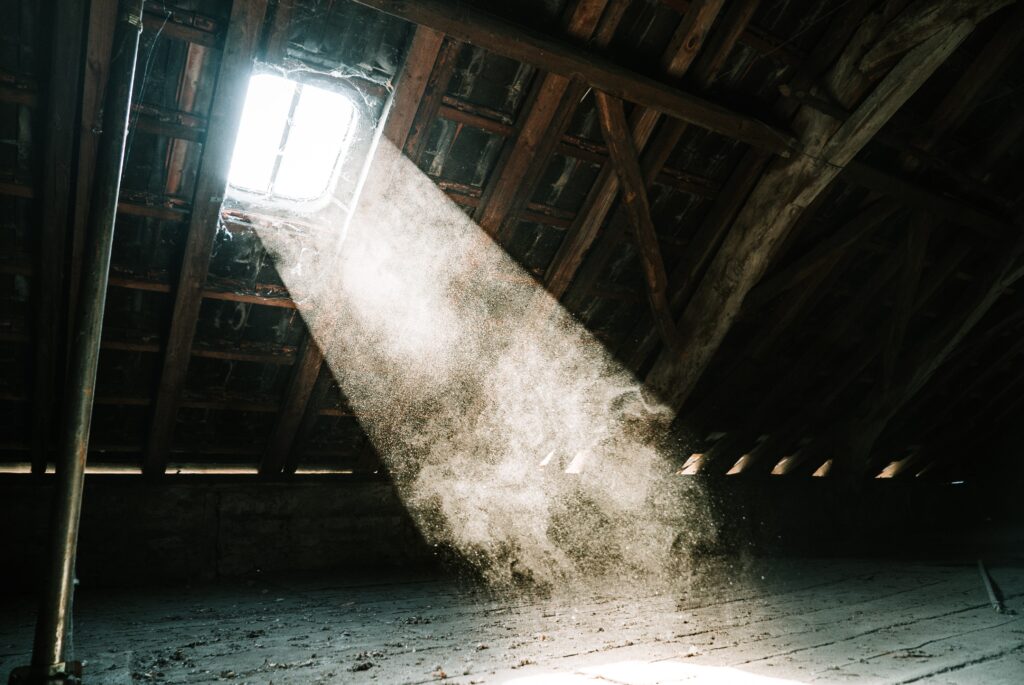Insulating Your Attic – How Much Insulation is Enough?
Depending on the age of your home, you may have old insulation that needs replacing or none at all. It’s possible the previous owners insulated the attic as a DIY project and didn’t use the right type of insulation or didn’t use enough.
Whether you have enough insulation will also depend on the type of insulation you have in your attic. The heat resistance of insulation is measured with an R-rating. The three most common types of insulation (fiberglass, cellulose, and fiberglass) have an R-rating of about R-3 per inch of thickness.
Insulation recommendations in the states are divided into zones. California, for example, has an insulation rating of three. So, the recommended r-rating is R-30 for between the attic floor joists and R-19 to R-20 for the walls.
Stop Using the Attic for Storage
It’s tempting to use spare attic space to store items you don’t know where else to put. This isn’t the best idea because adding material to the floor is the cheapest way to insulate an attic.
However, you can’t add enough insulation when the floor is covered with wooden planks or plywood. In short, an attic that doubles as storage space will end up costing you more money in energy bills.
What You Can Learn From an Attic Insulation Inspection
You can learn a lot about your insulation with just a visual inspection and a quick measurement of its depth. Doing this will give you a reasonable idea of how well your insulation is working. The most common types of insulation will need to be at least 10 to 12 inches deep across the attic floor to provide a sufficient level of insulation (R-30).
An attic insulation inspection will give you a good idea about the insulating material used in your attic.
- Loose-fill materials like blown-in fiberglass will be yellow, pink, or white lightweight insulation fibers
- Rock wool will be white or dense gray with black specks
- Granules resembling gravel will be vermiculite or perlite
- Cellulose loose fill insulation looks like small, grey pieces of newsprint
- Fiberglass batt insulation will be yellow, white, or pink lightweight batting
Do not disturb vermiculite insulation if you suspect this is what you have. There are serious health hazards associated with this product.
Assessing Your Attic Condition
Whether you are planning a DIY project or are considering a professional insulation service, always check out the condition of your attic before starting work.
Structure and Attic Access
Most homes with an accessible attic will have some type of hatch, attic stairs, or wall-mounted entry. The hatch should be large enough to carry the insulation through to the attic.
If there is no internal access, you may be able to create a temporary hole in the ceiling. Make sure you make the hole in a location that’s easily concealed, such as in a wardrobe.
The roof space should be free of obstructions. You may have your work cut out for you if you have been using your attic for storage. Roof spaces with a vertical clearance of fewer than 39 inches (1 meter) will prevent free movement. You might be better off with a professional insulation service that has the experience and tools to work in confined spaces.
Check for Moisture
Check for signs of moisture around the sheathing, finish, soffit, and roof framing. Symptoms of moisture in the attic include stains, leaks, mold, wood flaking, and wood rot. Moisture problems should be dealt with as soon as possible. Ignoring these issues will reduce the effectiveness of your insulation and may result in costly structural damage to your property.
Moisture can also make its way from the living area into the attic through condensation. A small amount of condensation is fine, provided there is adequate attic ventilation.
Excessive condensation could be due to warm air from the living spaces entering the attic through air leaks. The most common sources of air leaks into the attic are around light fixtures, attic ladders, attic kneewalls, and dropped soffits.
Plug those up before going any further. An insulation service can check the attic for the source of moisture. Air leaks and water leaks can be repaired before adding new insulation.
Installing Insulation in Your Attic
Distribute the material evenly over the attic floor with enough depth to get the recommended R-rating when insulating your attic yourself. It will be okay to cover existing insulation in most cases, provided it is dry.
It is also possible to add layers of insulation that are not the same as the original. For example, you could use blown-in insulation material to cover existing fiberglass batts that are laid between the ceiling joists.
Cover every square inch and pay attention to the perimeter of the attic above the wall plates. Areas that are left uninsulated will create cold spots where the floor and ceiling meet. Cold spots are prone to condensation and mold problems.
Attic Insulation Costs
Home Advisor states that the average cost to insulate an attic will range between $1500 and $3500. What you end up paying will depend on a few different variables, including:
- The insulation material and type (blown-in, rolls, batts)
- The square footage of your attic
- The contractor’s fee
- If you need rodent control
- Insulating ductwork
- Working around obstacles such as cable boxes and wiring
- Repairs from moisture
- Sealing up air leaks
Don’t forget that your home will become more energy efficient with good insulation. It may even pay for itself in a few years.
Insulation installation can be challenging, but it’s also a technical process where things can go wrong for the inexperienced. Always follow the directions on the packaging.
The last thing you need in your attic is moisture-laden insulation material between your ceiling joists. This is an issue that could lead to mold and rot. For the best results, be sure to call a professional attic insulation service near you for expert advice.

